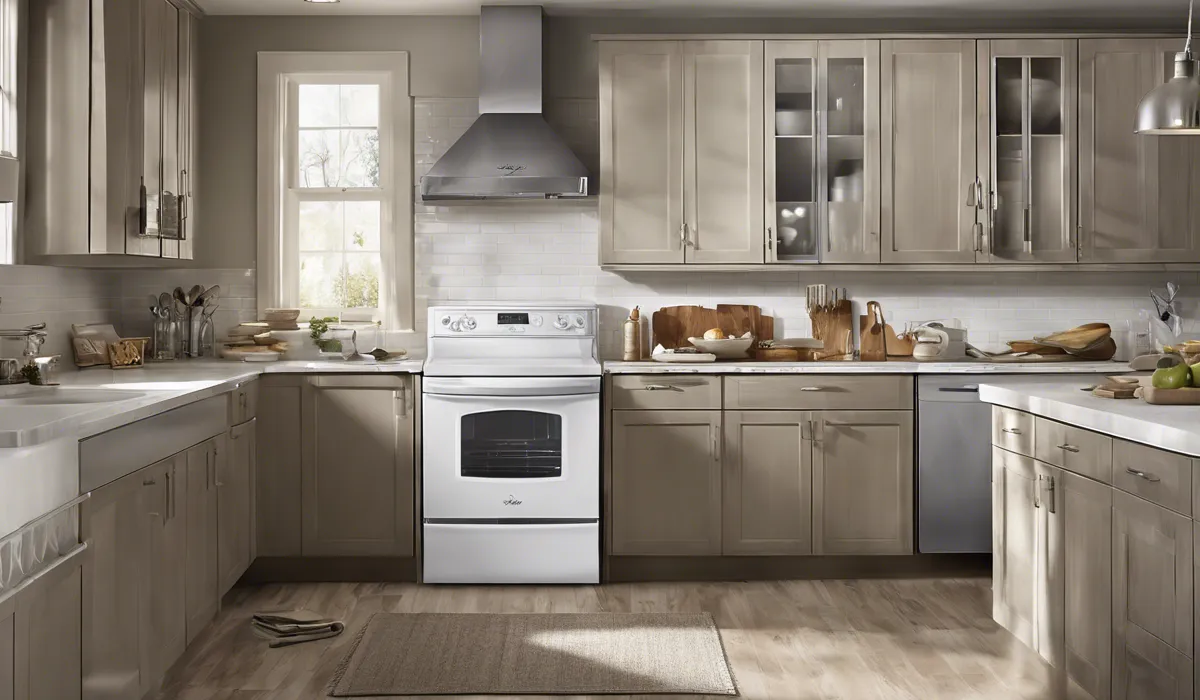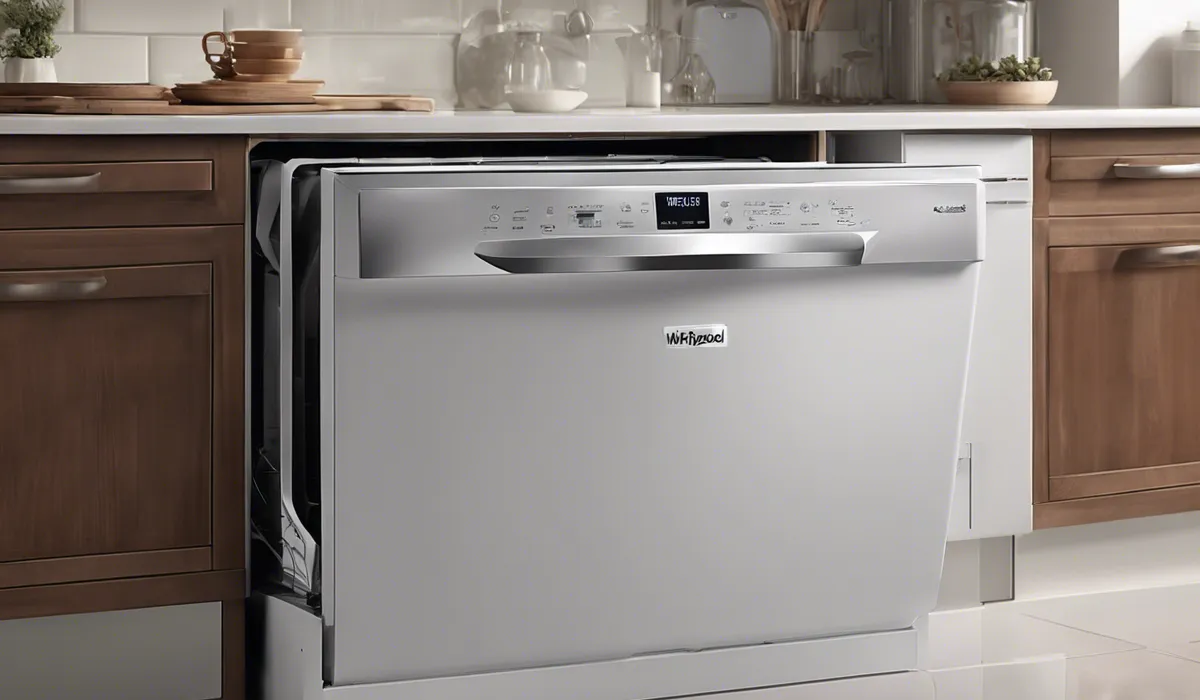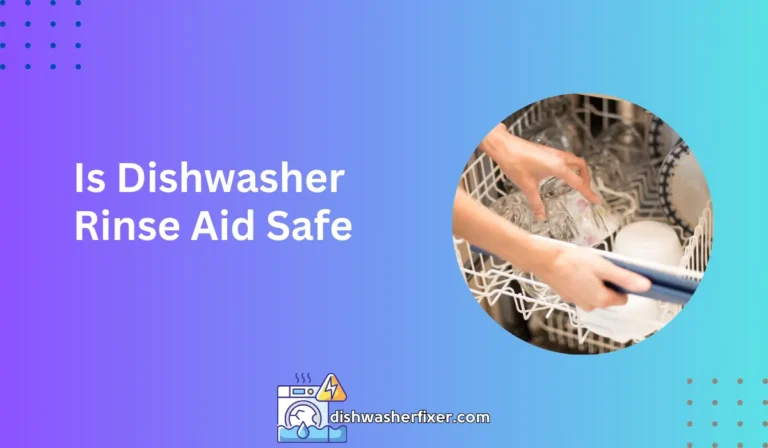Why is Whirlpool Dishwasher Not Drying? Fix it Today!
A Whirlpool dishwasher may not dry properly due to a malfunctioning heating element, overloaded dishes, or use of the wrong detergent. Ensure the dishwasher’s vent is unblocked and the rinse aid dispenser is filled. If issues persist, professional assessment is recommended.
Common Reasons for Drying Issues in Whirlpool Dishwashers

Ventilation Problems
One of the key factors in a dishwasher’s ability to dry dishes is proper ventilation. A Whirlpool dishwasher relies on a vent to release the hot, moist air generated during the wash cycle.
If this vent is blocked or not opening correctly, the steam cannot escape, which leads to wet dishes at the end of the cycle. Blockages can be caused by food particles, utensils that have been misplaced, or a malfunction of the vent itself.
Heating Element Malfunctions
The heating element in a dishwasher is crucial for both washing and drying. During the drying cycle, the element heats the air inside the dishwasher to help evaporate moisture from your dishes.
If the element is not working properly, the air will not heat up, and the dishes will remain damp. Common causes of heating element malfunctions include electrical issues or a burned-out component.
Rinse Aid Dispenser Issues
Rinse aid is an important part of the drying process as it helps water to sheet off of dishes, preventing droplets that can leave spots or retain moisture.
If the rinse aid dispenser is not releasing the rinse aid correctly, or if it’s empty, your dishes may not dry as expected. Additionally, using the wrong type or low-quality rinse aid can also affect the drying performance.
User Loading Mistakes
How you load your Whirlpool dishwasher can impact its drying efficiency. Overloading the dishwasher or placing dishes incorrectly can block the spray arms and vents, leading to poorly washed and dried dishes.
Certain materials, such as plastics, also have a harder time drying due to their non-porous nature and may require different loading strategies.
Control Board or Sensor Failures
The control board is the brain of your dishwasher, and it works with various sensors to regulate cycles and temperatures.
If there is a failure or malfunction in these components, it can disrupt the normal drying process. This could result in the dishwasher not getting the signal to heat up or vent properly during the drying phase.
Troubleshooting and DIY Fixes

Checking and Cleaning the Vent
Start by inspecting the vent to ensure it is not obstructed. You can usually find the vent on the inside of the dishwasher door or at the top of the unit.
Clean any debris or buildup that could be blocking the vent. If the vent does not open during the drying cycle, it might need to be replaced.
Inspecting the Heating Element
Visually inspect the heating element for any signs of damage or wear. If you suspect the element is not working, you can test it with a multimeter to check for continuity.
If the element has failed, it will need to be replaced. Make sure to disconnect the power to the dishwasher before attempting any repairs.
Refilling or Adjusting the Rinse Aid Dispenser
Check the rinse aid dispenser and refill it if necessary. Also, adjust the dispenser settings to ensure the correct amount of rinse aid is being used.
Different dishwasher models have different settings, so consult your Whirlpool dishwasher’s manual for specific instructions.
Properly Loading the Dishwasher
Load your dishwasher according to the manufacturer’s instructions. Avoid overcrowding and ensure that items are not nesting together.
Place items with concave surfaces at an angle to help water run off and allow better air circulation. Pay special attention to the placement of plastic items, which might need to be positioned on the top rack.
Resetting the Dishwasher
If you suspect a control board or sensor issue, try resetting the dishwasher by turning off the power at the circuit breaker for a minute before turning it back on. A reset can sometimes clear any errors and restore normal function.
Testing or Replacing Sensors
If the problem persists after a reset, sensors may need to be tested or replaced. Consult the manual for sensor locations and testing procedures, or seek the help of a professional if you are not comfortable with these steps.
Professional Repair or Replacement

When to Call a Technician
If you have performed all the suggested troubleshooting steps and the problem still exists, it’s time to call a qualified technician. Persistent issues with the heating element, control board, or sensors typically require professional expertise.
Cost-Benefit Analysis of Repair vs. Replacement
Evaluate the cost of repairs against the age and overall condition of your dishwasher. If the appliance is relatively new or the repair is minor, it may be worth fixing.
However, if the dishwasher is old or has required multiple repairs in the past, it might be more cost-effective in the long run to replace it.
Maintenance Tips to Prevent Future Issues
Regular maintenance can help prevent drying issues with your Whirlpool dishwasher. Clean the filter, spray arms, and vent regularly. Make sure to use the correct type and amount of detergent and rinse aid.
Also, periodically check and clean the seals and gaskets to ensure they are not contributing to heat loss during the drying cycle.
FAQs About Whirlpool Dishwasher Not Drying
Why is my Whirlpool dishwasher not drying the dishes properly?
Your Whirlpool dishwasher may not be drying dishes properly due to a faulty heating element, dishes being loaded too closely, or using an incorrect type of detergent.
Can a blocked vent cause my Whirlpool dishwasher to not dry dishes?
Yes, a blocked vent can prevent moisture from escaping and thus stop your Whirlpool dishwasher from drying dishes effectively.
How does rinse aid affect the drying performance of my Whirlpool dishwasher?
Rinse aid helps improve drying by reducing water surface tension, which promotes faster evaporation. Make sure the rinse aid dispenser is filled for optimal drying.
What should I check if my Whirlpool dishwasher’s heating element is malfunctioning?
If you suspect the heating element is malfunctioning, it is often best to consult a professional technician to assess and repair the issue.
How can overloading dishes affect the drying process in my Whirlpool dishwasher?
Overloading can prevent hot air from circulating properly, leading to dishes that are not thoroughly dried. Ensure there is enough space between dishes for air to flow.
Final Thoughts
Problems with drying in a Whirlpool dishwasher may stem from a faulty heating element, dish overloading, or incorrect detergent use. It’s critical to keep the vent clear and the rinse aid dispenser filled to promote proper drying.
Persistent drying issues should be evaluated by a professional to ensure the appliance operates effectively.
Useful Resources
- https://www.energystar.gov/sites/default/files/asset/document/Whirlpool%20Comments%20-%20ENERGY%20STAR%20Version%207%20Dishwasher%20Draft%202%20Specification%20%281%29_0.pdf
- https://www.cdc.gov/hygiene/childcare/clean-sanitize.html
- https://www.energystar.gov/productfinder/product/certified-residential-dishwashers/results





